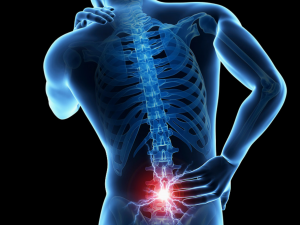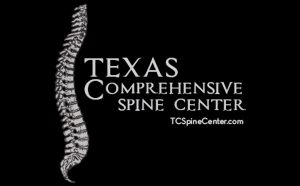COCCYDYNIA (TAILBONE PAIN)
 Between three and five bones fuse together to create the coccyx, or tailbone. Positioned at the base of the spine, the coccyx lies inferior to the sacrum. The term coccydynia reflects any pain to the tailbone. Patients often describe coccydynia using terms like achy or piercing pain. Pain may erupt while sitting for long period of time, or even during bowel movements.
Between three and five bones fuse together to create the coccyx, or tailbone. Positioned at the base of the spine, the coccyx lies inferior to the sacrum. The term coccydynia reflects any pain to the tailbone. Patients often describe coccydynia using terms like achy or piercing pain. Pain may erupt while sitting for long period of time, or even during bowel movements.
CAUSES OF COCCYDYNIA
Coccydynia (Tailbone Pain) occurs quite frequently. The coccyx absorbs much of the bodies weight while sitting down which can make it difficult for an individual to ignore the pain. Common causes of coccydynia include the following:
- Falling: Falling and landing on the coccyx can cause a great deal of pain and even lead to a serious injury of the coccyx. Falling onto the back or buttocks can cause coccydynia or even fracture or dislocate the coccyx.
- Athletic activities: Certain sports or athletic activities can cause coccydynia. Sports or activities that put strain on the back or require a great amount of repetitive motion of the spine can lead to coccydynia.
- Pregnancy: During pregnancy, hormones cause the area between the sacrum and coccyx to soften. The softening allows the coccyx to move during childbirth. The loose tissues may cause the coccyx to move or decrease the support the tissues typically provide to the coccyx. This lack of structural support may lead to coccydynia.
- Obesity: Spine surgeons suggest that each extra pound of weight one carries equals seven pounds of pressure placed on to the spine. Obesity can place a great deal of pressure onto the spine, resulting in the coccyx to slip out of place.
- Sitting on hard or uncomfortable surfaces
HOW DO PHYSICIANS DIAGNOSE COCCYDYNIA?
To diagnose coccydynia, the orthopedic physician starts with a physical examination. During a physical examination, the orthopedic hand specialist asks the patient about their medical history and inquires about their everyday lifestyle and activities in order to figure out what prompted the tailbone pain. Next, the physician palpates the coccyx and spine and tests the patients range of motion. While palpating, the physician looks for any abscesses or potential tumors that may cause the pain. To confirm the diagnoses, the physician uses diagnostic testing. Diagnostic testing can rule out any tumor or fractures of the coccyx. Diagnostic testing may include Xray, MRI, CT scan, bone scan, or a combination of multiple.
HOW DO ORTHOPEDIC SPECIALISTS TREAT COCCYDYNIA?
For most individuals experience coccydynia, the condition goes away with activity modifications and time. The treating physician may also recommend some remedies to alleviate the pain. Patients should always ask a doctor about at home treatments before performing them. Some at home remedies to treat and alleviate coccydynia include:
- Taking over the counter or prescribed non-steroidal anti-inflammatory medications
- Taking stool softeners to help with bowel movements
- Decreasing the amount of time spent sitting
- Applying ice or heating packs over the affected area
If at home remedies and time do not work to alleviate the pain, the treating physician may recommend additional treatments. Other treatments include:
- Physical therapy to stretch and strengthen the surrounding muscles
- Coccygeal nerve block
- Massage therapy
If conservative treatments do not work, the surgeon may have to perform surgery. The two surgical options to treat coccydynia include a partial coccygectomy and a total coccygectomy. Both surgeries are extremely rare. Coccygectomy’s involve removing part of or the entire coccyx.
Coccygectomy’s involve removing part of or the entire coccyx.
To view a list of all insurances that AOA Orthopedic Specialists accept, click HERE. To schedule an appointment online, click HERE.
DO YOU SUSPECT THAT YOU MAY HAVE AN INJURY TO THE COCCYX? CALL 817-375-5200 TO SCHEDULE AN APPOINTMENT WITH AN AOA ORTHOPEDIC SPECIALIST TODAY!

